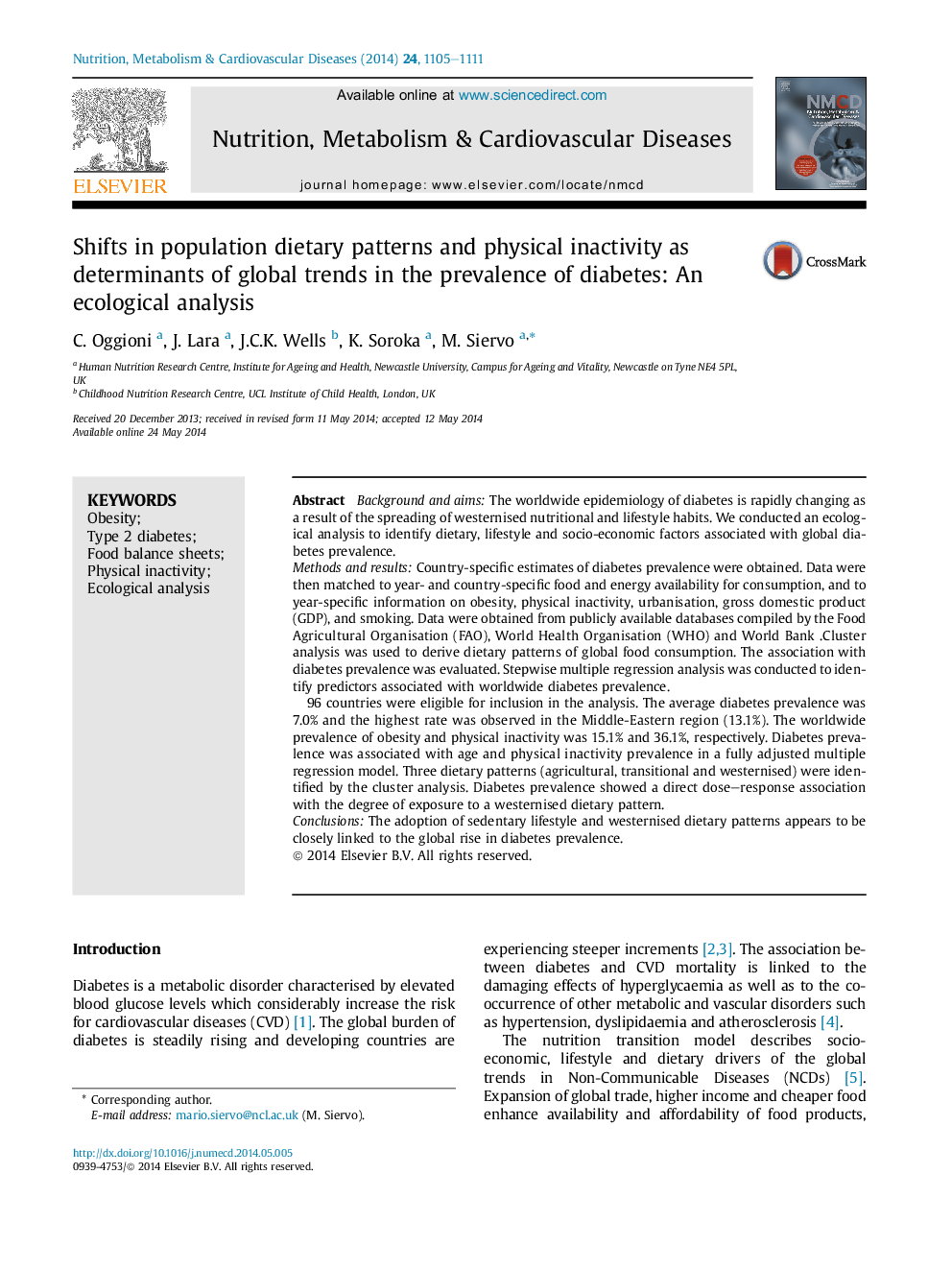| Article ID | Journal | Published Year | Pages | File Type |
|---|---|---|---|---|
| 3001943 | Nutrition, Metabolism and Cardiovascular Diseases | 2014 | 7 Pages |
•The worldwide epidemiology of diabetes is rapidly changing.•We evaluated the association of dietary and lifestyle factors with global diabetes prevalence.•Diabetes prevalence was associated with mid-point age and physical inactivity prevalence.•Immediate global and local actions need to be taken to decelerate the epidemic of NCDs.
Background and aimsThe worldwide epidemiology of diabetes is rapidly changing as a result of the spreading of westernised nutritional and lifestyle habits. We conducted an ecological analysis to identify dietary, lifestyle and socio-economic factors associated with global diabetes prevalence.Methods and resultsCountry-specific estimates of diabetes prevalence were obtained. Data were then matched to year- and country-specific food and energy availability for consumption, and to year-specific information on obesity, physical inactivity, urbanisation, gross domestic product (GDP), and smoking. Data were obtained from publicly available databases compiled by the Food Agricultural Organisation (FAO), World Health Organisation (WHO) and World Bank. Cluster analysis was used to derive dietary patterns of global food consumption. The association with diabetes prevalence was evaluated. Stepwise multiple regression analysis was conducted to identify predictors associated with worldwide diabetes prevalence.96 countries were eligible for inclusion in the analysis. The average diabetes prevalence was 7.0% and the highest rate was observed in the Middle-Eastern region (13.1%). The worldwide prevalence of obesity and physical inactivity was 15.1% and 36.1%, respectively. Diabetes prevalence was associated with age and physical inactivity prevalence in a fully adjusted multiple regression model. Three dietary patterns (agricultural, transitional and westernised) were identified by the cluster analysis. Diabetes prevalence showed a direct dose–response association with the degree of exposure to a westernised dietary pattern.ConclusionsThe adoption of sedentary lifestyle and westernised dietary patterns appears to be closely linked to the global rise in diabetes prevalence.
